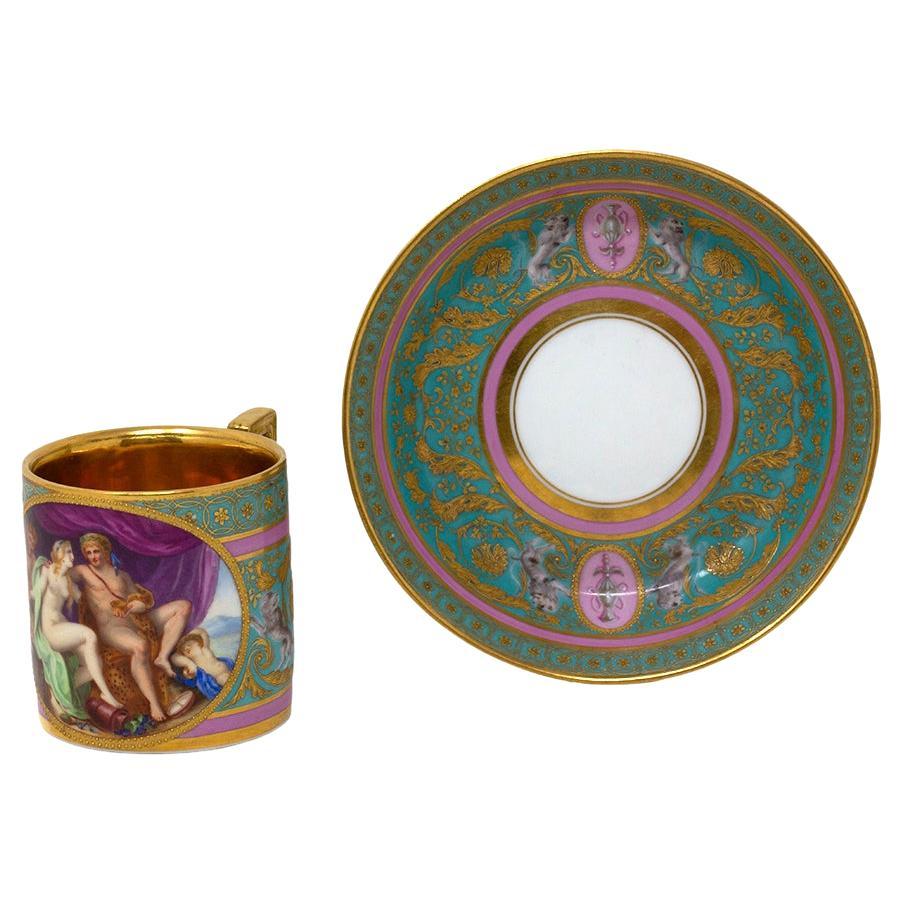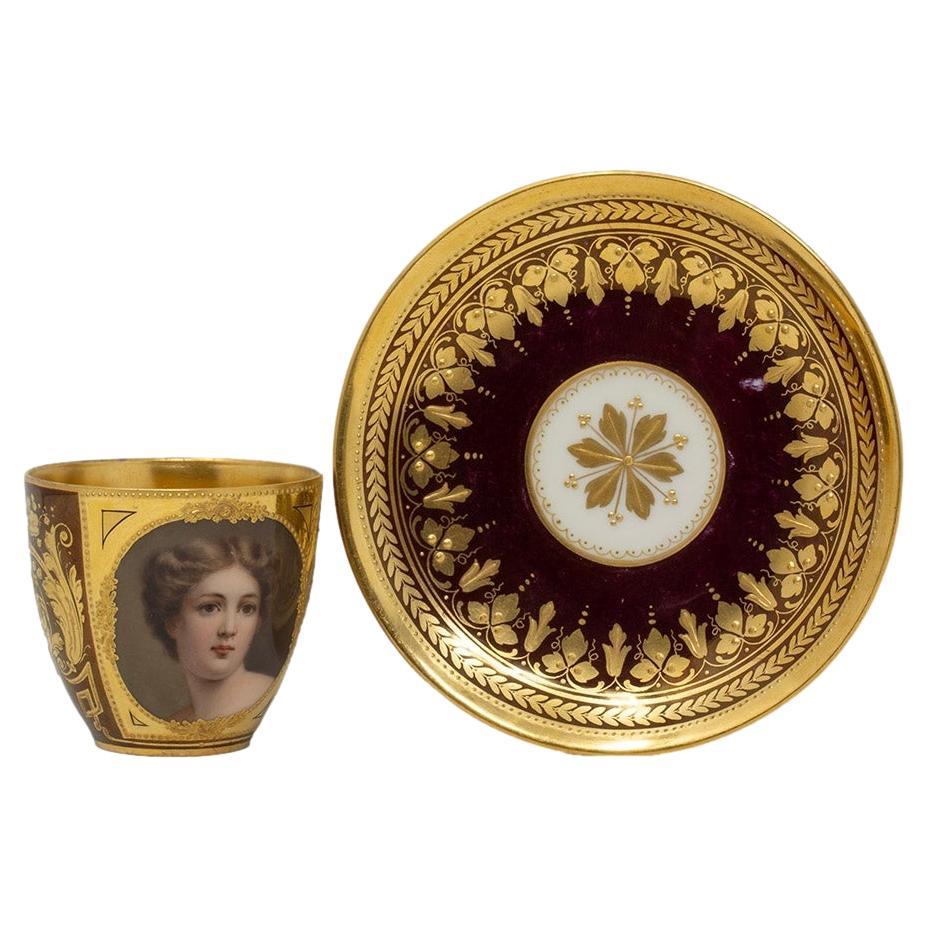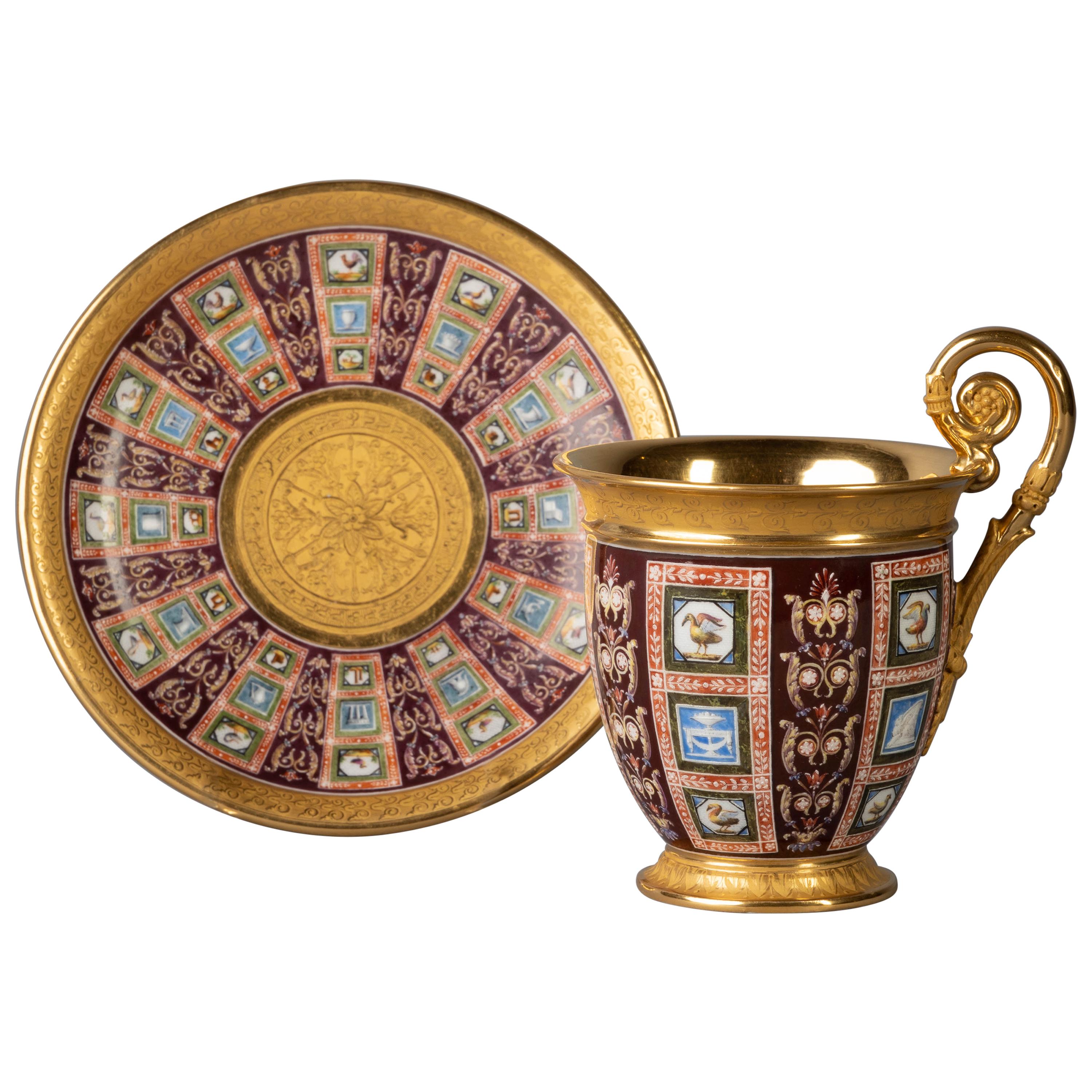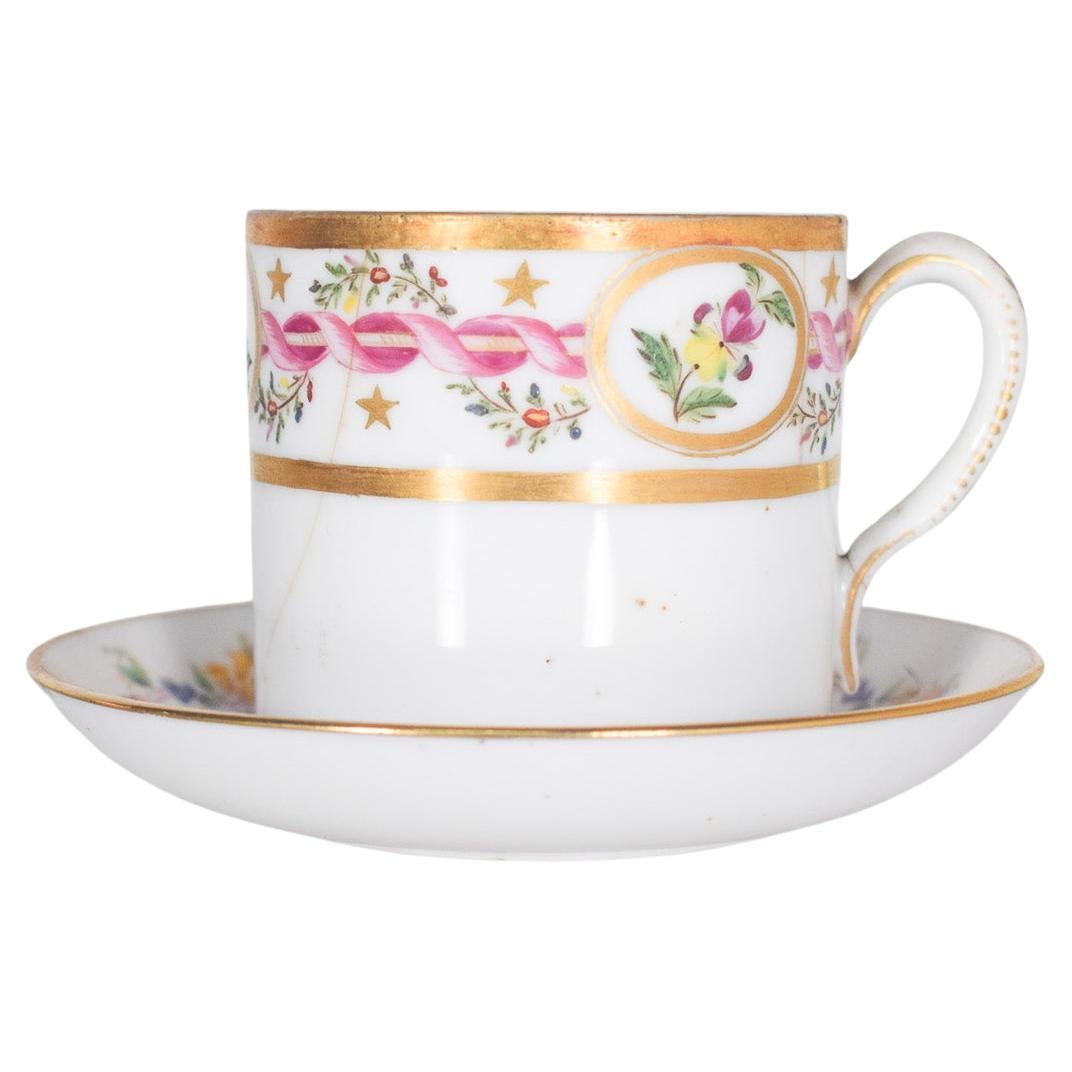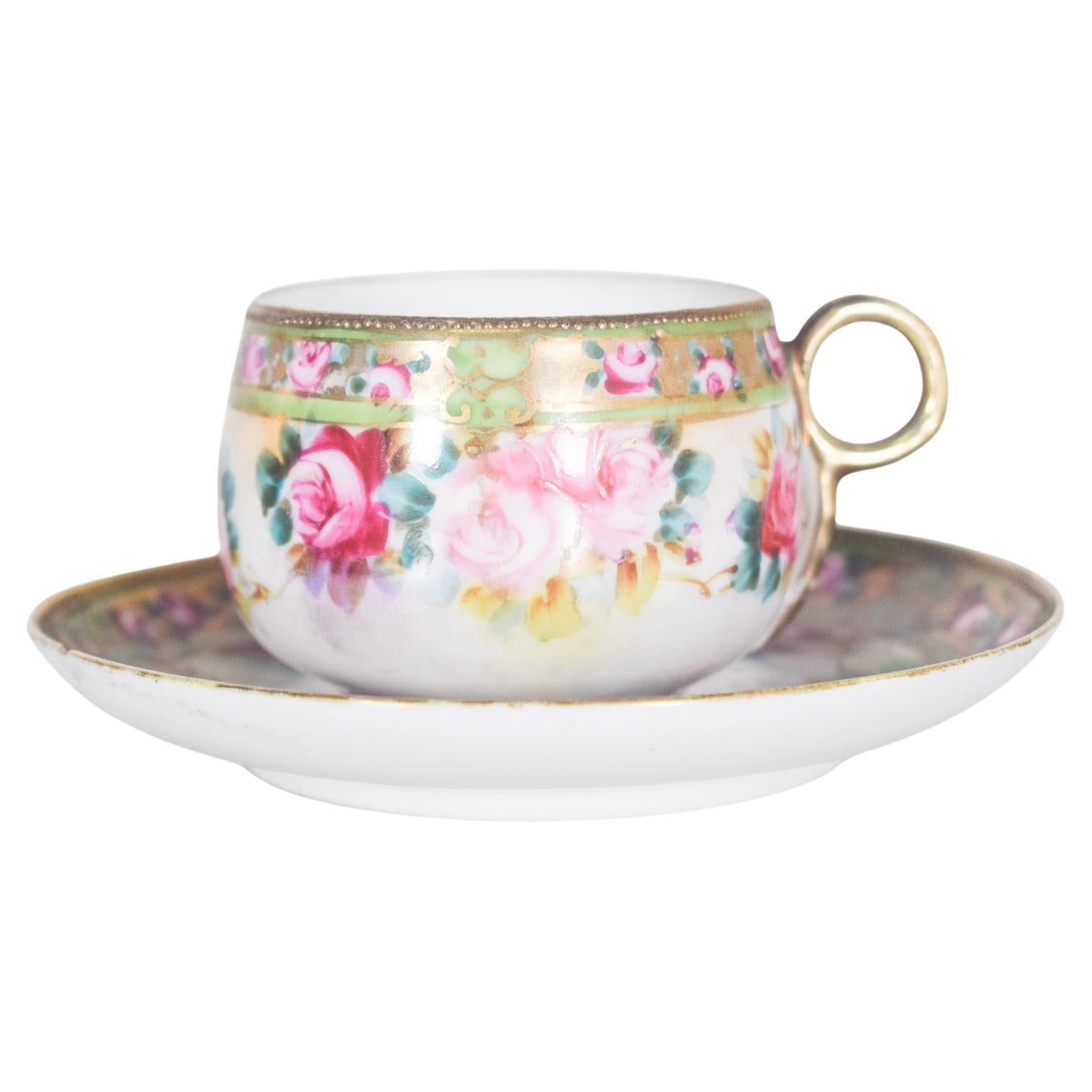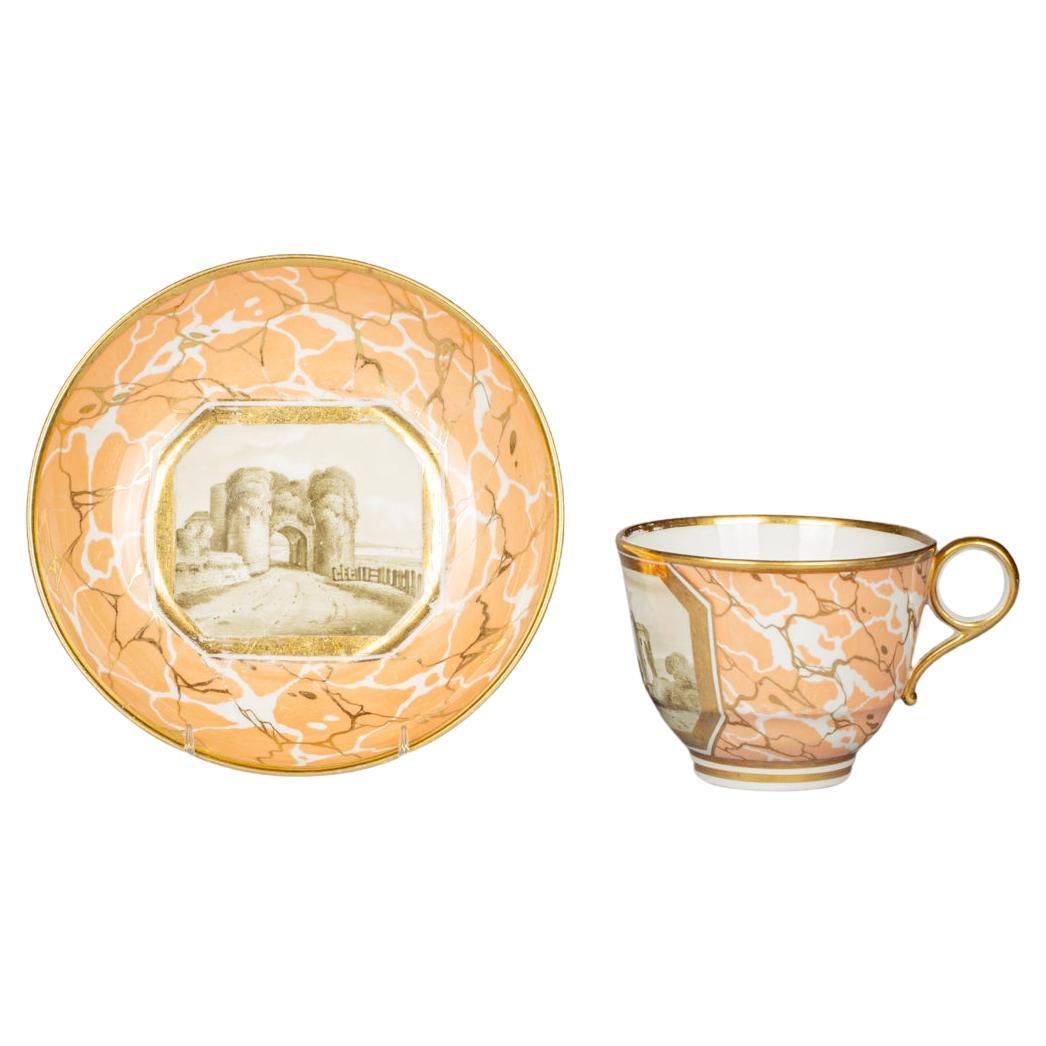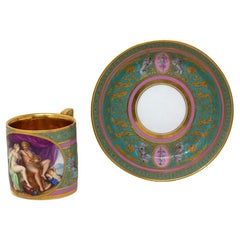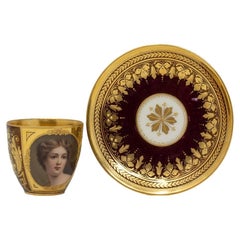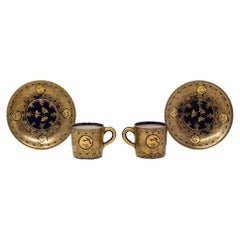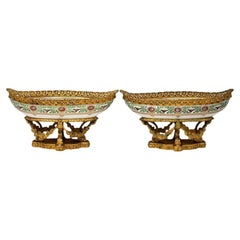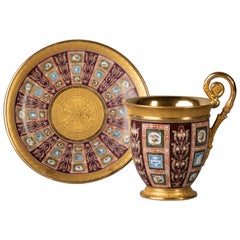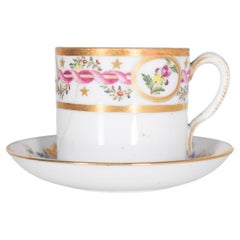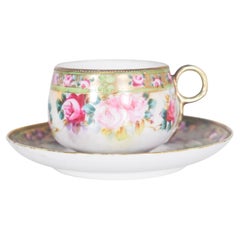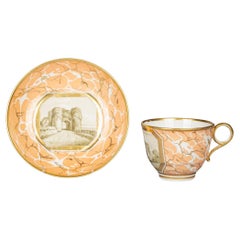Items Similar to Vienna Porcelain Cup and Saucer
Want more images or videos?
Request additional images or videos from the seller
1 of 21
Vienna Porcelain Cup and Saucer
$3,496.76
£2,500
€2,985.55
CA$4,783.50
A$5,352.87
CHF 2,795.02
MX$65,807.99
NOK 35,262.38
SEK 33,181.72
DKK 22,274.46
Shipping
Retrieving quote...The 1stDibs Promise:
Authenticity Guarantee,
Money-Back Guarantee,
24-Hour Cancellation
About the Item
Decorated with a Female Portrait
Measurements Saucer 2.7cm High x 13.4cm Diameter (1.1 x 5.3 Inches) Cup 6.5cm High x 8.5cm Long x 6.5cm Wide (2.56 x 3.35 x 2.56 Inches)
From our Ceramics collection, we are pleased to offer this Vienna Cup and Saucer. The Vienna Cup and Saucer made from porcelain with a deep dish saucer beautifully decorated with intricate gilt scrollwork bordering each colour and scene. Colours of turquoise and deep purple finish the inner saucer with a central medallion of white glaze. The base of the saucer is signed in underglaze blue with the classic Vienna beehive mark. The matching cup is features a central hand painted romantic scene of a Shepard and shepherdess in a classical garden perched next to a marble bust on column. The cup features layered banding decoration with matching gilt scrollwork and colours. The centre of the cup has a horizontal decoration featuring cherubs flaking a spread eagle imitating the Austrian coat of arms. The base of the cup is also signed with the underglaze blue Vienna beehive mark and date to the late 19th century circa 1875.
Vienna Porcelain, is a porcelain manufacturer in Alsergrund in Vienna, Austria. It was founded in 1718 and continued production until 1864. The firm was Europe’s second-oldest porcelain factory after Meissen, and for 25 years the two remained the only European producers. Initially Vienna porcelain was founded by Claude du Paquier and owned privately. Paquier was an official of the Viennese Imperial court. In 1744 it was rescued from financial difficulties when it was bought by the Empress Maria Theresa, and thereafter remained an asset of Empress Theresa.
The wares from the earlier, private period before 1744 are the most sought-after today and demand the highest value due to the fact they were produced in lower numbers, they often are referred to as Du Paquier porcelain. The other high point, and, perhaps the factory’s most glamorous period was from 1784 to 1805 when a variety of innovative wares in Neoclassical styles were produced.
- Similar to:Royal Vienna Porcelain (Manufacturer)
- Dimensions:Height: 0.4 in (1 cm)Width: 0.4 in (1 cm)Depth: 0.4 in (1 cm)
- Materials and Techniques:
- Place of Origin:
- Period:
- Date of Manufacture:Circa 1875
- Condition:
- Seller Location:Newark, GB
- Reference Number:Seller: SURSD1stDibs: LU6971242115032
About the Seller
5.0
Gold Seller
Premium sellers maintaining a 4.3+ rating and 24-hour response times
Established in 2019
1stDibs seller since 2022
35 sales on 1stDibs
Typical response time: 2 hours
- ShippingRetrieving quote...Shipping from: Newark, United Kingdom
- Return Policy
Authenticity Guarantee
In the unlikely event there’s an issue with an item’s authenticity, contact us within 1 year for a full refund. DetailsMoney-Back Guarantee
If your item is not as described, is damaged in transit, or does not arrive, contact us within 7 days for a full refund. Details24-Hour Cancellation
You have a 24-hour grace period in which to reconsider your purchase, with no questions asked.Vetted Professional Sellers
Our world-class sellers must adhere to strict standards for service and quality, maintaining the integrity of our listings.Price-Match Guarantee
If you find that a seller listed the same item for a lower price elsewhere, we’ll match it.Trusted Global Delivery
Our best-in-class carrier network provides specialized shipping options worldwide, including custom delivery.More From This Seller
View AllAntique Vienna Porcelain Cup and Saucer
By Royal Vienna Porcelain
Located in Newark, England
Decorated with a Classical Scene
Measurements Saucer 2.7cm High x 13.4cm Diameter (1.1 x 5.3 Inches) Cup 6.5cm High x 8.5cm Long x 6.5cm Wide (2.56 x 3.35 x 2.56 Inches)
From our C...
Category
Antique Late 19th Century Austrian Belle Époque Ceramics
Materials
Ceramic, Porcelain
Vienna 19th Century Porcelain Cup and Saucer
By Royal Vienna Porcelain
Located in Newark, England
Decorated with a Female Portrait
From our Ceramics collection, we are pleased to offer this Vienna Cup and Saucer. The Vienna Cup and Saucer with a brown iridescent glaze decorated ...
Category
Antique Late 19th Century Austrian High Victorian Tea Sets
Materials
Ceramic, Porcelain
Japanese Meiji period (1868-1912) Satsuma Cup and Saucer Pair by Kinkozan
By Kinkozan
Located in Newark, England
PAIR OF CUP AND SAUCERS BY KINKOZAN
MEASUREMENTS
Saucer 10.8cm Diameter x 1.5cm High (4.25 x 0.6 Inches)
Cup 4.6cm High x 6.7cm Long x 5cm Wide (1.8 x 2.64 x 1.97 Inches)
From our ...
Category
Antique Late 19th Century Japanese Meiji Ceramics
Materials
Ceramic, Earthenware, Pottery
French Sevres Château de Fontainebleau Porcelain Serving Dishes
By Manufacture Nationale de Sèvres
Located in Newark, England
Ormolu Mounted
From our Ceramics collection, we are delighted to offer a pair of French Sevres boat-shaped porcelain dishes with original ormolu mounts. The serving dishes beautifully decorated with a frieze of vibrant green undulating foliate garlands interspersed with mosaic style classical romanesque cartouches and birds. The inside decorated with gilt scrollwork embellishments with a six point start to the centre. The porcelain raised on four scrolling legs draped with garlands of fruiting vine. The porcelain bearing the Louis Philippe interlaced L's Sevres mark, the Chateau de Fontainebleau mark, incised marks for the original serves blank manufacturing along with initials and finally the painted initials WB. The dishes dated to the first half of the 19th century 1839/1840 respectively. The ormolu mounts stamped to the base CHER.
Château de Fontainebleau (also known as the Palace of Fontainebleau) is located southeast of Paris and is one of the largest French royal châteaux. The medieval castle served as a residence for the French monarchs from Louis VII...
Category
Antique Mid-19th Century French Louis Philippe Ceramics
Materials
Ormolu
French Good Sized Sevres Porcelain Box
By Manufacture Nationale de Sèvres
Located in Newark, England
STAMPED CHATEAU DES TUILERIES CIRCA 1900
From our ceramics collection, we are delighted to offer this large sized French 'Sevres' Porcelain Box. The 'Sevres' Box decorated with a ba...
Category
Antique Late 19th Century French Belle Époque Porcelain
Materials
Brass
Japanese Meiji Period Cloisonne Enamel Tea Set
Located in Newark, England
Extensively Decorated with Traditional Japanese Images
The Tea Set comprises of fifteen pieces including six cup and saucers, a lidded teapot, a lidded sugar pot and a milk jug. The...
Category
Early 20th Century Japanese Meiji Tea Sets
Materials
Metal, Enamel, Metallic Thread
You May Also Like
French Porcelain Cabinet Cup and Saucer, Sevres, circa 1815
Located in New York, NY
The cup with elaborate gilt scroll handle terminating in a palmette, the sides finely painted in colors with graduated octagonal cartouches enclosing birds and ruins, painted to resemble micro-mosaics alternating with blue faux marble panels...
Category
Antique 1810s French Tea Sets
Materials
Porcelain
Mintons English Porcelain Cup and Saucer
Located in Lisboa, Lisboa
Mintons english Porcelain Cup and Saucer. Decorated with a delicate floral motif and gold details, the cup has a classic cylindrical...
Category
Antique Mid-19th Century British Victorian Tea Sets
Materials
Porcelain
$358 / set
Porcelain Cup and Saucer, Design from Victorian Era
Located in Lisboa, Lisboa
Porcelain Cup and Saucer. Finely decorated, displaying an exquisite floral pattern with roses in vibrant shades of pink and green. The piece is richly decorated with gold details, wh...
Category
Mid-20th Century British Mid-Century Modern Tea Sets
Materials
Porcelain
English Porcelain Cup and Saucer, Worcester, circa 1820
Located in New York, NY
Painted in grisaille on a marbleized peach ground.
Category
Antique 1820s Tea Sets
Materials
Porcelain
Antique Sevres Style Paris Porcelain Gilt Tea Cup Saucer Alexander Great Dante
By Royal Vienna Porcelain
Located in Dublin, Ireland
An exceptional French Paris porcelain tea cup complete with its original undertray, of outstanding quality. First quarter of the nineteenth century.
Exquisitely painted with Class...
Category
Antique 19th Century Austrian Regency Tea Sets
Materials
Ceramic, Porcelain
Sèvres - Louis Philippe - Cup and Saucer 'Capraire', early 19th century
Located in DELFT, NL
Sèvres porcelain cup and saucer from rom the 'Service fond beau blue, frise capraire en or' of the Emperor Louis Philippe at the Tuiler...
Category
Antique Early 19th Century French Louis XVI Porcelain
Materials
Porcelain
